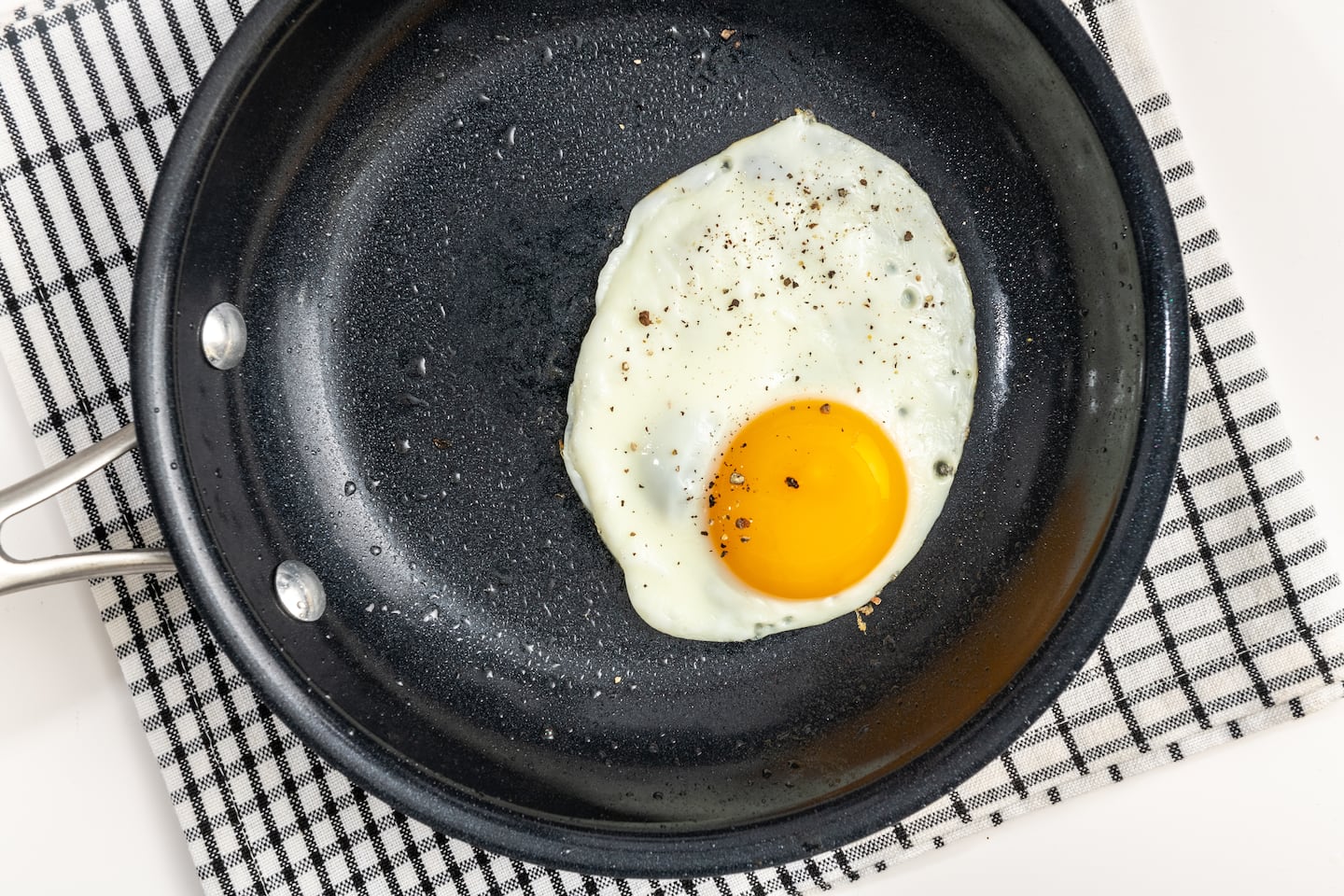How to get perfect sunny-side-up eggs every time

And then there’s the issue of cooking a fried egg. To do it properly requires more oil (almost one cup) than I usually want to use. You can fry them with less oil, but then you’re either stuck at the stove, basting to get the egg white fully cooked (I’m too lazy for that) or okay with it being a little raw at the top (one of the few food things I’d rather not stomach).
There are other stovetop cooking methods that produce the soft and supple texture I often desire, but they have drawbacks of their own. One method, “blindfolding,” calls for dropping a few ice cubes in the pan and covering it to trap in the steam. This works well to cook the egg all of the way through while keeping it soft, but it also causes the yolk to film over, hiding its beautiful glow. Other websites recommend a similar technique sans ice that produces slightly closer results to what I want, but I’ve found that there’s a small window for perfection where the film doesn’t start to creep up over the yolk.
That’s where the oven comes into play. The gentle, indirect heat your oven provides cooks the white all the way through while keeping it tender and leaving the yolk as golden as the sun on a clear summer day.
I picked up this method working the egg station during the brunch shift, so I know from personal experience cooking dozens upon dozens of eggs this way that this technique is practically foolproof. Here’s how to cook picture-perfect sunny-side up eggs:
- Heat the oven to a moderate temperature (in the range of 325 to 350 degrees).
- In an oven-safe nonstick skillet over medium-low or medium heat, heat a small amount of fat — just enough help keep the eggs from sticking. (Heating the pan helps speed things up a bit, but this step isn’t vital.)
- Crack your eggs into the skillet, one at a time, and cook until the whites begin to set, just a few seconds.
- Transfer the skillet to the oven and bake until the whites are fully set but the yolks remain runny, 3 to 5 minutes.
- Season with salt and pepper and you’re ready to go.
In my restaurant days we’d serve them atop kale salads and bowls of biscuits and gravy, or you could pile them on pasta or alongside crispy hash browns. Think of it as a less daunting way to add the benefits of a poached egg without the finickiness but with the aesthetics to create a feast for the eyes.






